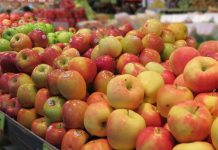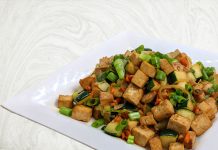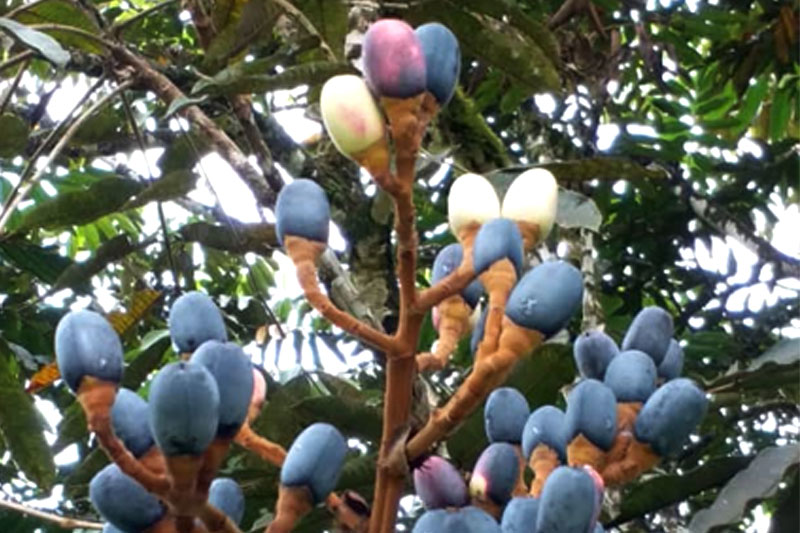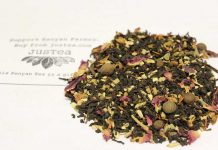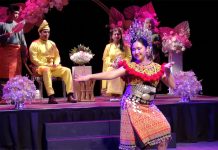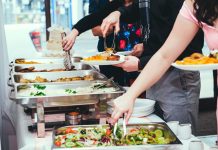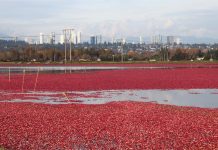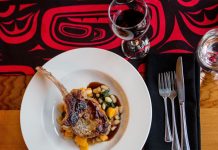By Keri Vermeulen
Is Alleppey worth a visit? Explore this raved “Venice of the East”, and discover the people and cuisine in the hub of Kerala’s backwaters.
Kerala is the birthplace of the Indian “homestay”. Travellers are often hosted by land or plantation owners eager to share the richness of their region.
Our trip, expertly planned by Marvel Tours, provided a diverse experience – from exploring the colourful colonial port city of Kochi on the Arabian Sea, the tea-growing hills of Munnar – to meandering peacefully down the scenic Alleppey backwaters on deluxe houseboats, kettuvallams.
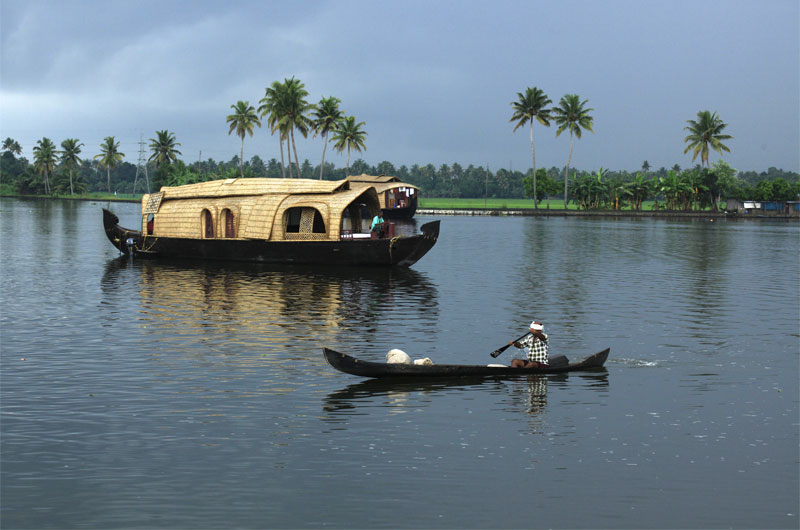
If there was one thread that brought all of these regions together – besides excellent local hospitality – it was food. The cuisine tells a story of an ancient spice trade, a blend of religious histories and a people who are dearly connected to their land.
Kettuvallam: heaven on water
Kettuvallams are thatched roof boats traditionally used for transporting grains and spices. For the traveller, these popular boats are heaven on water. They boast private bedrooms with ensuites, an open air dining room, a cushioned deck for lounging on the bow, and a crew that will cater to your every need – especially your appetites.
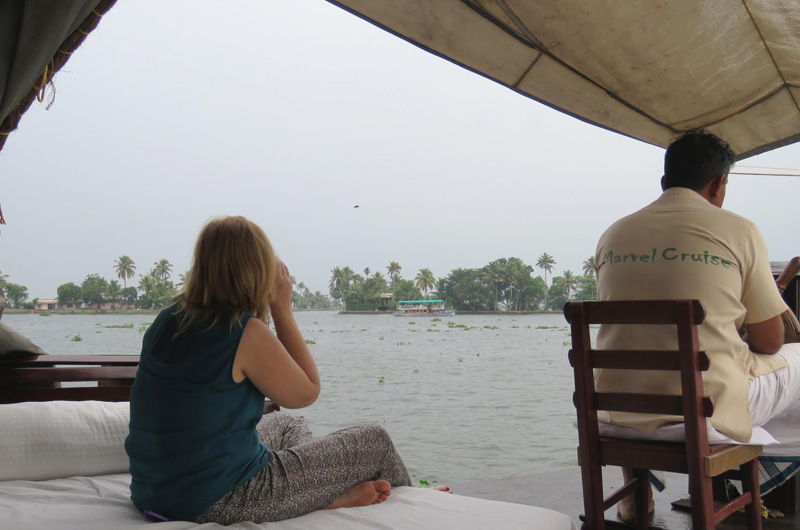
Our overnight on a kettuvallam provided a daylong float down the Pampa River in Alleppey. On route, we stopped in local villages to buy fresh seafood and produce with the boat’s chef for our dinner on board.
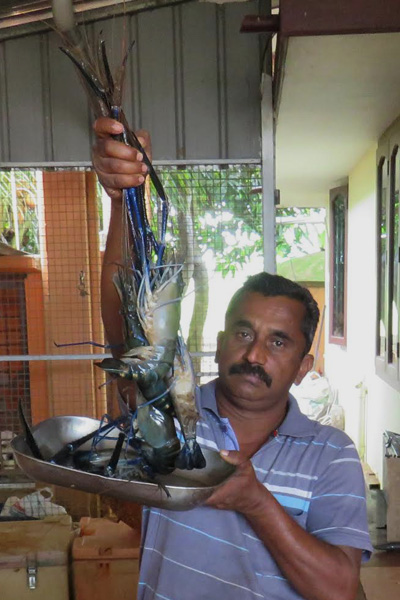
Our dinner was a feast of giant blue-shelled freshwater prawns, pan-fried pale spot fish (a bony but delicious local fish) seasoned with chili powder, garlic, turmeric and coconut oil – served with Matta rice and aviyal. The tasty vegetable side dish, aviyal is made with coconut, yoghurt, green chili, turmeric, jeera and curry leaves. For dessert, we had deep fried, battered bananas.
Perhaps my favourite meal in Kerala was a traditional Hindu celebration meal, which came at a homestay, nestled on Alleppey’s Pampa river bank. Kurialacherry House is hosted by Jacob Thomas, the great grand nephew of a rice plantation farmer, Thomas Kurialecherry, who was also the first Archbishop of the local diocese. Jacob warmly welcomed us from our canoe taxi onto his family’s land.
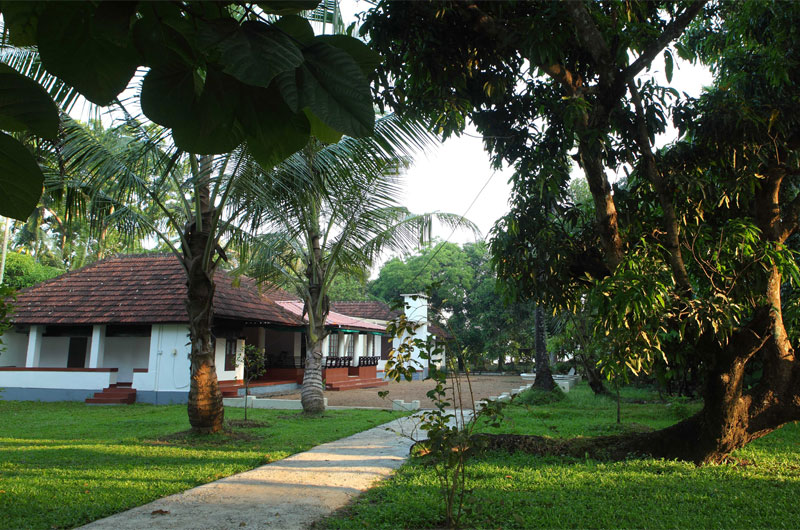
After settling us in a grand room overlooking the river, he took us on a tour of his land – showing us the rice field, the abundance of tropical fruit trees and root vegetables on his property. Our dining room was on a covered, outdoor patio, and there, Jacob would bring us our daily meals, tea and snacks on a table decorated with fresh tropical flowers.

Keralan Cuisine: Rich and Flavourful Infused
A lot of Keralan cuisine has religious roots. Malabar Muslim traditional meals feature biryani, rice flavoured with spices and often served with lamb or other meat. Syrian Christian traditional meals include a variety of seafood and meat masalas (outstanding and complex in their spices) along with a dry, coconut and cabbage curry called thoran, which is like a tropical coleslaw.
Hindu meals, contrary to popular belief are not always vegetarian, unless they are from the highest Hindu caste, Brahmin, who never eat meat. And so it was a vegetarian Brahmin celebration meal, Sadya that delighted the usually meat-loving tastes of my husband and I.
Served on a large banana leaf, the green plate explodes with colour and flavour. Our host Jacob spooned out three kinds of pickle – lime, bitter gourd, and mango. Beside that were spoonfuls of chutney – both beetroot and coconut.
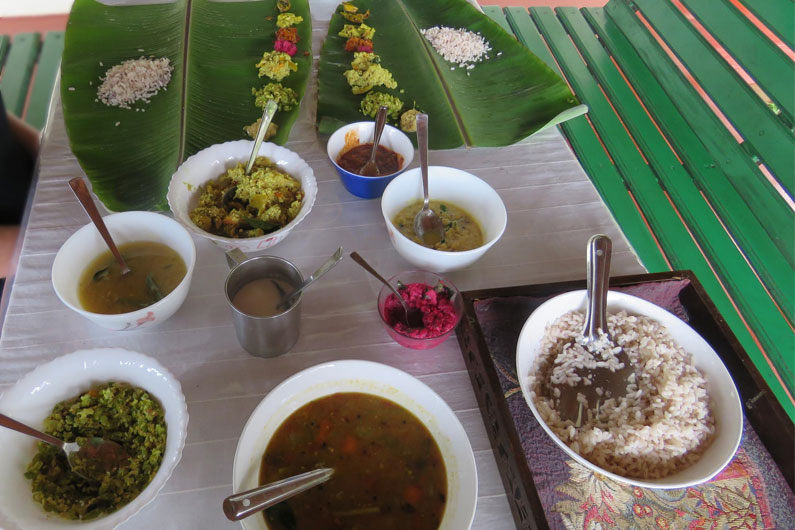
In the centre of the leaf is a large portion of Matta rice. We added aviyal (this one made from carrots, drumstick leaves, crushed coconut, yams, curry leaf and chili), then dhal curry (made from lentils, chilis and spices), followed by yoghurt curry (made from curds), mustard seed and curry leaf – served with pineapple, and a coconut curry with beans. And don’t forget the crispy bread papadams.
The real show stopper was the dessert, payasam – a delicious South Indian rice pudding made from milk, jiggery (brown sugar), raisins, nuts, cinnamon, and ada(steamed rice paste). The payasam was served in a glass, but if you want to eat it Kerala-style, you pour it onto your banana leaf, and mash it together with a banana, using your fingers as utensils.
Combining history, religious roots, natural abundance, dazzling flavours and warm hospitality, Kerala is indeed, God’s Own Country.
Links



